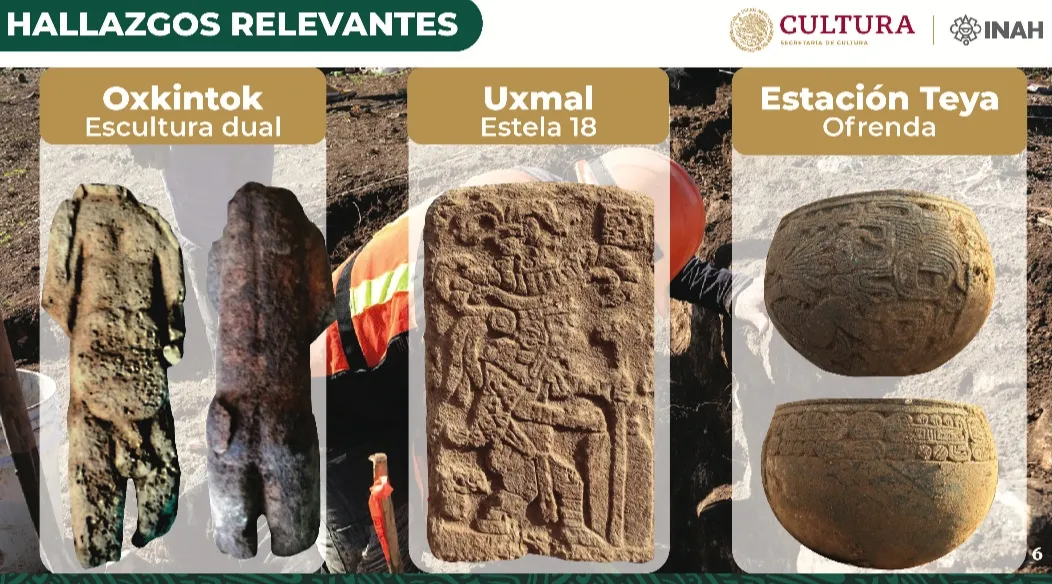During his presentation at the morning conference of the President of Mexico, Andrés Manuel López Obrador, the general director of the National Institute of Anthropology and History (INAH), Diego Prieto Hernández, pointed out that the archaeological excavation of Section 3 of the Maya Train, which is 159.7 kilometers long and runs from Calkiní, in Campeche, to Izamal, in Yucatán, has concluded.
The federal official detailed that as a result of these multidisciplinary works that are carried out in parallel to the federal priority project, three findings of great importance for the Mayan culture have been unveiled.
These are Stela 18, in Uxmal, a dual sculpture of a decapitated warrior, in Oxkintok, and recently, an offering with vessels with writing and bas-relief, in the lands where the Teya station of the Maya Train will be built.
As of Monday, January 30, he added, 7,256 immovable structures have been registered and preserved, ranging from foundations, ancient roads and walls, to some larger structures.
Also 374 movable goods have been counted, among them, vessels with writing, low relief or painted, 216,371 ceramic sherds, five human burials and 117 cultural features associated with caves and cenotes, which provide information about the Mayas of the past who settled in the area.
The head of INAH pointed out that once these materials were recovered, they were ordered, classified, restored, catalogued and analyzed.
Promise of INAH
Prieto Hernández highlighted the application of the Program for the Improvement of Archaeological Zones (Promeza) in the sites that integrate the Puuc Route, such as Oxkintok, Uxmal, Kabah, Xlapak, Sayil, Labná and Chacmultún, in the south of Yucatán, as well as Dzibilchaltún, located north of Mérida.
In the case of Uxmal, he said, the structures of the El Palomar complex are being attended, and at the same time the previous works for the construction of a Visitors’ Attention Center (Catvi) are advancing.
In Dzibilchaltún the work is focused on the investigation, conservation, consolidation and maintenance of structures, among them, the Temple of the Seven Dolls, relevant for its archaeoastronomical importance, as well as in the restructuring of the Site Museum.
TYT Newsroom



